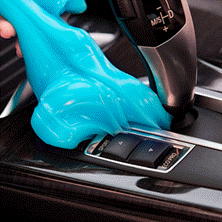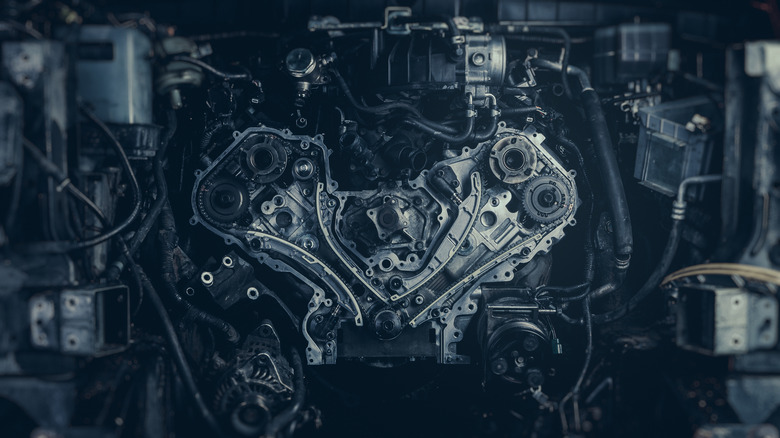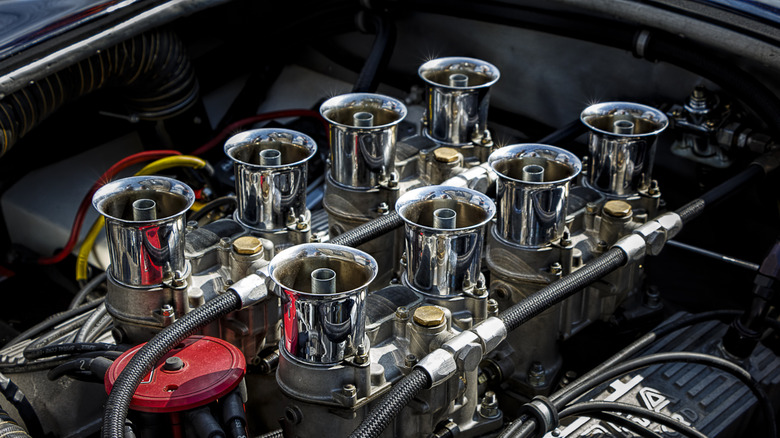staff@slashgear.com (Madeline Cuccio)
2025-06-21 08:45:00
www.slashgear.com
It’s a question that seems fairly simple at first glance: Do fewer cylinders really mean less fuel consumption? That is the case, generally speaking, considering less cylinders means less fuel being burned over the same timeframe. So, running two isolated engines with the same size combustion chamber, one a V6 and one a V8, at the same RPM — sure, a V6 easily wins in the fuel efficiency department. But that fails to account for a host of other factors.
The perpetual debate between the V6 and V8 poses a lot of questions. The short answer, though, lies in what we can observe in real-world environments. For instance, the fact that most cars optimized for fuel efficiency use less than eight cylinders isn’t an accident. In equal real-world applications, a V6 generally always triumphs over an equivalent-level V8 in terms of fuel efficiency.
The trade-off is that the V6 is often less powerful, with many modern cars compensating for this by implementing hybrid systems and forced induction. Though turbochargers may not always improve MPG, that discussion is complicated. So while it’s true that, as the saying goes, there’s no replacement for displacement, that rule doesn’t apply when hypermiling enters the discussion. Let’s break down exactly why V6 engines are more fuel-efficient at an anatomical level.
How engines use fuel
There are several types of internal combustion engine that all function differently, but the principles by which each produces power is the same. In the typical four-stroke setup found in most cars, fuel is injected into the combustion chamber, mixing with air, pressurized by the piston moving up, and ignited by a spark plug.
This ignition produces the power stroke, forcing the piston back down. The more pistons you have mated to a single crankshaft, the more frequently power strokes occur per revolution, leading to marginally higher overall power figures. However, that comes with the caveat of needing more fuel for each power stroke. So with all other factors being equal and no load applied, a V6 engine requires less fuel than a V8 to cycle normally.
Other factors come into play when factoring fuel efficiency benefits, such as weight and size savings, forced induction, and the shape of the vehicle. For instance, suppose you have a more compact turbocharged V6 inside a sedan. Because there’s less engine block, less room is required to fit all necessary components, making for a tighter package.
It’s one reason why transverse engines are popular in cars with short noses, for example. A more aerodynamic, lighter package will always be more fuel-efficient than a boxier, heavier one. Plus, if you have a smaller overall package, that means the engine bay may accommodate forced induction systems like turbochargers. These can offset the power detriment between V6 and V8 engines without sacrificing the fuel efficiency benefits.
Real-world examples
Smaller displacement, lighter cars like the many generations of Honda Civic have proven the definitive choice of hypermilers since the 1973 Oil Crisis. Today, despite modern technology improving fuel efficiency, these sentiments still ring true: It still takes less energy to move a smaller ca. For most city driving and commuting applications, you likely won’t see many full-size V8-equipped vehicles outperforming compacts in economy runs.
But what about specific situations in which the more powerful V8 excels, such as towing? Fuel consumption takes into account the speed of the vehicle relative to the load placed upon the engine. In other words, a V6 engine struggling to pull a load at high-speeds will be less efficient than a V8 lazily operating in identical platforms.
For instance, this video from The Fast Lane Truck demonstrates an EcoBoost-equipped Ford F-150 managing approximately 8.7 MPG, towing 7,000 pounds of load at about 65 miles per hour, whereas the equivalent F-150 with the 5.0-liter V8 sees about 9.8 MPG with the same load, a difference of approximately 12%.
Therefore, in the real world, V6 engines typically use less gas than V8s. Given identical displacements, a V6 has less power strokes per revolution than a V8, and thus uses less fuel to rotate the engine’s crankshaft. Overall fuel efficiency is further compounded by factors such as aerodynamics, weight, and driving style, but generally, the less cylinders a regular car has, the more efficient it’ll be. However, there are specific situations in which those roles are reversed, the most obvious being highway towing, where the V8’s additional power allows the engine to run more efficiently than the V6.

PULIDIKI Car Cleaning Gel Universal Detailing Kit
Make car cleaning effortless with the PULIDIKI Car Cleaning Gel Universal Detailing Kit, a simple yet effective solution for keeping your vehicle spotless. With over 89,741 ratings and an impressive 4.1-star average, it’s no wonder this kit is a highly rated Amazon Best Seller.
Loved by over 40,000 buyers in just the past month, it’s an unbeatable deal for only $6.99. Perfect for cleaning those hard-to-reach areas, this detailing gel is a must-have for car enthusiasts. Order now for just $6.99 at Amazon!
Help Power Techcratic’s Future – Scan To Support
If Techcratic’s content and insights have helped you, consider giving back by supporting the platform with crypto. Every contribution makes a difference, whether it’s for high-quality content, server maintenance, or future updates. Techcratic is constantly evolving, and your support helps drive that progress.
As a solo operator who wears all the hats, creating content, managing the tech, and running the site, your support allows me to stay focused on delivering valuable resources. Your support keeps everything running smoothly and enables me to continue creating the content you love. I’m deeply grateful for your support, it truly means the world to me! Thank you!
|
BITCOIN
bc1qlszw7elx2qahjwvaryh0tkgg8y68enw30gpvge Scan the QR code with your crypto wallet app |
|
DOGECOIN
D64GwvvYQxFXYyan3oQCrmWfidf6T3JpBA Scan the QR code with your crypto wallet app |
|
ETHEREUM
0xe9BC980DF3d985730dA827996B43E4A62CCBAA7a Scan the QR code with your crypto wallet app |
Please read the Privacy and Security Disclaimer on how Techcratic handles your support.
Disclaimer: As an Amazon Associate, Techcratic may earn from qualifying purchases.








































































































